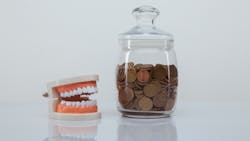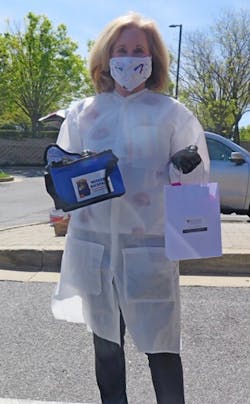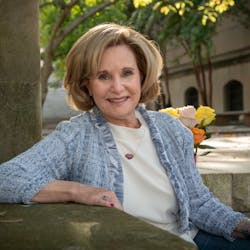6 ways one dental practice owner increased revenue in 2020
I was speaking with my dental CPA, Allen Schiff, recently, and he asked how my 2020 revenue compared to 2019. I confidently said, “It was higher.” Somewhat shocked, he told me that most of his clients reported that their revenue was down 10%–15% in 2020. He asked me how I managed to have a better year in 2020, despite having to close my doors for eight weeks at the beginning of the pandemic. That conversation forced me to think about everything I did to work on my practice when I could not work in my practice.
I made the most of newfound “free time.”
Even though I was not practicing dentistry, I was not idle for one minute while my office was closed from mid-March through mid-May. Unlike many of my colleagues who were glued to Netflix, I immediately called all of my patients over the age of 80 to see if they were well and if they needed anything. These calls went from a goodwill gesture to a marketing opportunity because several of these patients subsequently posted on Facebook about how pleased they were that their dentist called to check on them.
Because my entire team was on unemployment through the shutdown, I started rescheduling patients from home for June, July, or August. Any patients who wanted to get in sooner than their newly scheduled appointment were placed on an ASAP list. We used this list every time we had an opening in the schedule. We also placed any patient who cancelled an appointment on an unscheduled list, and a team member called or texted them through our Weave phone system to remind them of the importance of oral health. Any patients who came in for their first cleaning of the year from July through September were scheduled for their second cleaning sometime between October and December so they could make full use of their dental insurance benefits. If the hygiene schedule was full, some of the hygiene patients were scheduled with one of the doctors so that any necessary treatment could be diagnosed and scheduled before the end of the year.
I invested in a course for self-improvement.
I took a dental branding course from Dr. Jessica Emery every Monday while the office was not open. The information I gained helped me to figure out not only my purpose, vision, mission, and values for the practice, but also to define my “avatar,” or ideal patient, and how to market to that ideal patient through Instagram and other social media platforms. I was already using social media for my practice, but spending this time to improve and learn from someone who built her entire dental practice using Instagram helped me to enhance my brand.
I found a way to serve the community and gain visibility.
Building on the name of my dental practice, Crossroads Dental Arts, I came up with an idea I called “Crossroads Cares.” I put together oral careI reorganized my focus.
When it was time to reopen the practice in mid-May, I hired a few new employees to support my associate, who began to work more days. My office manager, who had been with me for 13 years, did not return to work, and at the same time, I turned 60. I decided to hire a second part-time associate to free up time for me to help manage the practice. I also hired a Dentrix trainer to help my front desk team members and me master tasks that we were not proficient in, especially dental insurance. I began managing the schedule for all of the providers in the office to make sure we were maximizing our time and skills. At the end of each day and on weekends, the office phone is transferred to my cell phone. By answering the phone when the practice is closed, I am able to schedule new patients and fill in any cancellations. On several weekends, I have had as many as six new patients call and schedule appointments for the following week. If you do not answer the phone, potential patients will call the next dentist they find on Google.
I extended the time allotment for hygiene.
I decided to lengthen hygiene appointments from 60 to 75 minutes. This extra 15 minutes has allowed our hygienists to perform more adjunctive procedures—placing sealants, placing Arestin, using the VELscope, performing OralDNA saliva testing, placing desensitizing agents, using the intraoral camera, and educating patients on additional services, including periodontal treatment, cosmetic procedures, night guards, and Invisalign. Our case acceptance has improved just by allotting more time for hygiene appointments. Because there are still some patients who are not yet comfortable coming to the dental office, there is time in the schedule to allow the hygienists to see only six patients a day. We make sure that every patient is confirmed using our Weave communication system. We text and/or call patients if they have not con-firmed through Weave. Because we have almost no last-minute cancellations or no-shows, our hygienists remain extremely profitable for the practice.
I prioritized same-day treatment.
As with many dental practices, we are performing as much same-day treatment as possible. By hiring extra team members, we can easily increase daily production and collections by educating patients that it is in their best interest to get their dental work completed in as few visits as possible. Each doctor has at least two treatment rooms and two assistants to allow for same-day treatment.
The ideas and strategies above, as well as many others that I put in place during the year, helped my dental practice to thrive in 2020. What set me apart from many other dental practitioners during the pandemic was that I was extremely focused. I used the shutdown to create a vision of what I wanted for my dental practice and then put systems in place that resulted in revenue that exceeded the previous year.
My wish is that we all have a safe, healthy, and prosperous 2021!
About the Author
Joanne Block Rief, DDS
Joanne Block Rief, DDS, practices general dentistry in Owings Mills, Maryland. She is a hygienist and a third-generation dentist and started working in the dental field at age 13. She enjoys being a dental speaker and mentoring and coaching other dental professionals. Dr. Rief can be reached at 443-604-2200 or at [email protected].
Updated April 19, 2021


